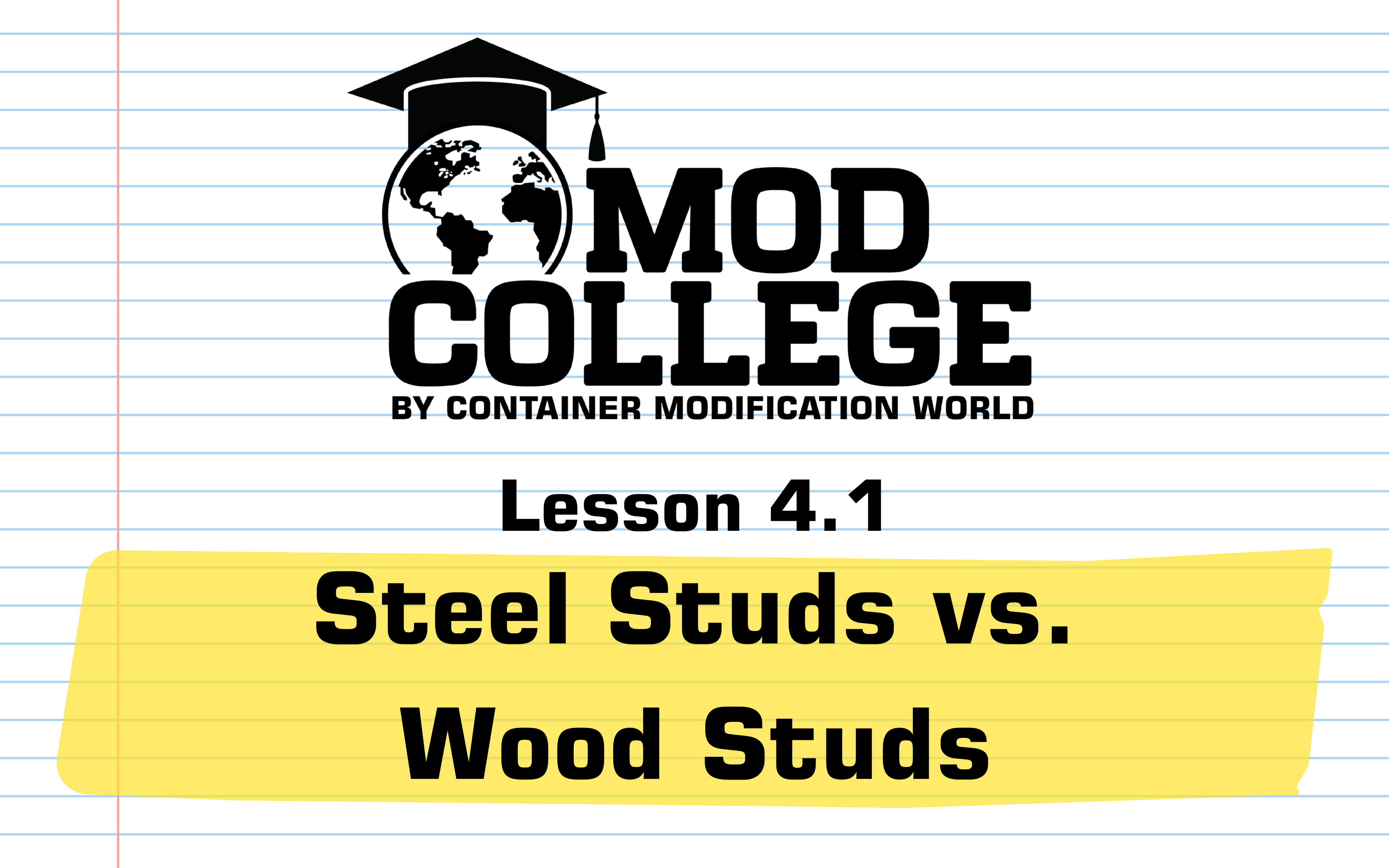
Which Framing Method is Better For Container Modifications?
When modifying a shipping container into a livable or workable space, framing is one of the first interior steps. Whether you're building out walls, ceilings, or insulation cavities, you'll need to choose between steel studs and wood studs.
At Container Modification World, we get this question all the time:
“Should I frame my container with steel or wood?”
The answer? It depends on your project goals, budget, insulation method, and even the tools you have on hand.
This lesson will break down the pros and cons of each and help you figure out which system is right for your build.
Why You Need Framing in the First Place
Shipping containers are built from corrugated steel. That makes attaching insulation, drywall, utilities, or finishes directly to the walls difficult, unless you first install a framing system to create a proper cavity and mounting surface.
Whether you choose steel studs or wood studs, framing lets you:
- Install electrical wiring and plumbing
- Add spray foam or batt insulation
- Mount drywall, plywood, or paneling
- Build interior partitions or rooms
- Create a thermal break from the steel wall
Steel Studs – Pros & Cons
Steel studs are cold-formed galvanized metal pieces that slot together and screw into place.
Pros:
- Fire-resistant – won’t burn or add to fire load
- Will never rot or attract pests
- Perfectly straight – no warping, twisting, or cupping
- Works well with spray foam insulation
- Compatible with CMW Steel Stud Brackets – no welding required
- Clean and easy to handle—no sawdust or resin
Cons:
- Can conduct temperature if not thermally broken
- Requires self-tapping screws or fine-thread drywall screws
- Slightly slower to install than wood if you're not familiar
- Needs proper electrical bushings to prevent wire abrasion
Wood Studs – Pros & Cons
Traditional 2x4 or 2x6 lumber framing is familiar to most builders and widely available.
Pros:
- Cheaper upfront (depending on lumber prices)
- Easier to nail or screw into
- Can be faster to install for DIYers or general carpenters
- Works well with our Wood Stud Brackets
Cons:
- Can rot or attract pests in humid environments
- Flammable – increases fire load inside the container
- Can warp, twist, or shrink over time
- May absorb condensation if the container isn’t ventilated properly
If you use wood, be sure to use professionally installed 2lb closed-cell spray foam insulation.
Which Should You Choose?
|
Scenario |
Best Choice |
|
Spray foaming your walls |
Steel Studs |
|
Humid or damp environments |
Steel Studs |
|
Temporary or low-cost build |
Wood Studs |
|
Building to code with fire safety |
Steel Studs |
|
DIY builder with basic tools |
Wood Studs |
|
Long-term investment or rental unit |
Steel Studs |
How CMW Makes Framing Easier
Our steel stud framing kits are designed specifically for container interiors. They:
- Create a gap between the studs and the steel wall (for spray foam)
- Mount using self-tapping screws—no welding
- Fit both 2 1/2" and 1 5/8" 20-gauge studs
- Come in bundles for 10', 20', and 40' containers
Many of our customers pair this kit with closed-cell spray foam to achieve R-values high enough for four-season comfort.
For a video walk-through, check out The Container Guy's YouTube video here.



